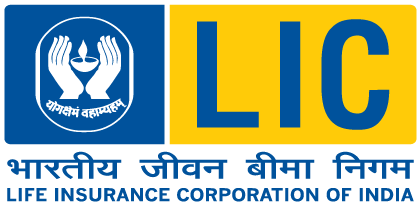Mutual Funds

Mutual Funds
The term Mutual Funds refers to a pool of money accumulated by several investors who aim at saving and making money through their investment. It is the best investment vehicle for retail investors who do not have either knowledge or time or both to invest their money in stocks, bonds, or other securities. The mutual fund manager takes care of investing the fund in various stocks, debentures, and other investment areas depending on the objectives of the scheme.
The biggest advantage of investing through a mutual fund is that it gives small investors access to professionally-managed, diversified portfolios of equities, bonds and other securities, which would be quite difficult to create with a small amount of capital.
A broad variety of mutual funds are available in the market for different needs of the investors to meet their diverse financial goals with a minimum capital to start investing. For example, investing in mutual funds through SIP (Systematic Investment Planning) offers a fairly stable route with a disciplined approach to ensure the realization of the investors’ short and long term investment goals.
What is SIP?
SIP stands for systematic investment plan. As the name suggests, it inculcates the habit of saving in you by auto-debiting certain fixed amount from your bank account at pre determined intervals (e.g. Weekly, monthly, quarterly etc)
How it works?
You need to give post dated cheques or opt for auto debit form your bank account on pre- determined dates. Certain amount will be auto debited depending on your options chosen E.g. you choose to invest for 6 months; monthly basis for 10,000 then 10,000 will be auto-debited for 6 months Long term goals can be achieved without investing lumpsum using SIP
TYPES OF MUTUAL FUNDS IN INDIA.
☞ Based on structure
Open-Ended Funds: These are funds in which units are open for purchase or redemption through the year. All purchases/redemption of these fund units are done at prevailing NAVs. Basically these funds will allow investors to keep invest as long as they want. There are no limits on how much can be invested in the fund. They also tend to be actively managed which means that there is a fund manager who picks the places where investments will be made. These funds also charge a fee which can be higher than passively managed funds because of the active management. They are an ideal investment for those who want investment along with liquidity because they are not bound to any specific maturity periods. The investors can withdraw their funds at any time they want thus giving them the liquidity they need.
Close-Ended Funds: These are funds in which units can be purchased only during the initial offer period. Units can be redeemed at a specified maturity date. To provide for liquidity, these schemes are often listed for trade on a stock exchange. Unlike open ended mutual funds, once the units or stocks are bought, they cannot be sold back to the mutual fund, instead they need to be sold through the stock market at the prevailing price of the shares.
Interval Funds: These are funds that have the features of open-ended and close-ended funds in that they are opened for repurchase of shares at different intervals during the fund term. The fund management company offers to repurchase units from existing unit holders during these intervals. If unit holders wish to they can sell shares in favor of the fund.
☞ Based on asset class
Equity Funds: These are funds that invest in equity (stocks/shares) of companies. These are considered high-risk funds but also tend to provide high returns. Equity funds can include specialty funds like infrastructure, fast moving consumer goods and banking to name a few.
Debt Funds: These are funds that invest in debt instruments e.g. company debentures, government bonds and other fixed income assets. They are considered safe investments and provide fixed returns. These funds do not deduct tax at source so if the earning from the investment is more than Rs. 10,000 then the investor is liable to pay the tax on it himself.
Money Market Funds: These are funds that invest in liquid instruments e.g. T-Bills, CPs etc. They are considered safe investments for those looking to park surplus funds for immediate but moderate returns. Money markets are also referred to as cash markets and come with risks in terms of interest risk, reinvestment risk and credit risks.
Balanced or Hybrid Funds: These are funds that invest in a mix of asset classes. In some cases, the proportion of equity is higher than debt while in others it is the other way round. Risk and returns are balanced out this way.
☞ Based on investment objective
Growth funds: Under these schemes, money is invested primarily in equity stocks with the purpose of providing capital appreciation. They are considered to be risky funds ideal for investors with a long-term investment timeline. Since they are risky funds they are also ideal for those who are looking for higher returns on their investments.
Income funds: Under these schemes, money is invested primarily in fixed-income instruments e.g. bonds, debentures etc. with the purpose of providing capital protection and regular income to investors.
Liquid funds: Under these schemes, money is invested primarily in short-term or very short-term instruments e.g. T-Bills, CPs etc. with the purpose of providing liquidity. They are considered to be low on risk with moderate returns and are ideal for investors with short-term investment timelines.
Tax-Saving Funds (ELSS): These are funds that invest primarily in equity shares. Investments made in these funds qualify for deductions under the Income Tax Act. They are considered high on risk but also offer high returns if the fund performs well.
Capital Protection Funds: These are funds where funds are split between investment in fixed income instruments and equity markets. This is done to ensure protection of the principal that has been invested.
Fixed Maturity Funds: Fixed maturity funds are those in which the assets are invested in debt and money market instruments where the maturity date is either the same as that of the fund or earlier than it.
Pension Funds: Pension funds are mutual funds that are invested in with a really long term goal in mind. They are primarily meant to provide regular returns around the time that the investor is ready to retire. The investments in such a fund may be split between equities and debt markets where equities act as the risky part of the investment providing higher return and debt markets balance the risk and provide lower but steady returns. The returns from these funds can be taken in lump sums, as a pension or a combination of the two.
☞ Based on specialty
Sector Funds: These are funds that invest in a particular sector of the market e.g. Infrastructure funds invest only in those instruments or companies that relate to the infrastructure sector. Returns are tied to the performance of the chosen sector. The risk involved in these schemes depends on the nature of the sector.
Index Funds: These are funds that invest in instruments that represent a particular index on an exchange so as to mirror the movement and returns of the index e.g. buying shares representative of the BSE Sensex.
Fund of funds: These are funds that invest in other mutual funds and returns depend on the performance of the target fund. These funds can also be referred to as multi manager funds. These investments can be considered relatively safe because the funds that investors invest in actually hold other funds under them thereby adjusting for risk from any one fund.
Emerging market funds: These are funds where investments are made in developing countries that show good prospects for the future. They do come with higher risks as a result of the dynamic political and economic situations prevailing in the country.
International funds: These are also known as foreign funds and offer investments in companies located in other parts of the world. These companies could also be located in emerging economies. The only companies that won’t be invested in will be those located in the investor’s own country.
Global funds: These are funds where the investment made by the fund can be in a company in any part of the world. They are different from international/foreign funds because in global funds, investments can be made even the investor's own country.
Real estate funds: These are the funds that invest in companies that operate in the real estate sectors. These funds can invest in realtors, builders, property management companies and even in companies providing loans. The investment in the real estate can be made at any stage, including projects that are in the planning phase, partially completed and are actually completed.
Commodity focused stock funds: These funds don’t invest directly in the commodities. They invest in companies that are working in the commodities market, such as mining companies or producers of commodities. These funds can, at times, perform the same way the commodity is as a result of their association with their production.
Market neutral funds: The reason that these funds are called market neutral is that they don’t invest in the markets directly. They invest in treasury bills, ETFs and securities and try to target a fixed and steady growth.
Inverse/leveraged funds: These are funds that operate unlike traditional mutual funds. The earnings from these funds happen when the markets fall and when markets do well these funds tend to go into loss. These are generally meant only for those who are willing to incur massive losses but at the same time can provide huge returns as well, as a result of the higher risk they carry.
Asset allocation funds: The asset allocation fund comes in two variants, the target date fund and the target allocation funds. In these funds, the portfolio managers can adjust the allocated assets to achieve results. These funds split the invested amounts and invest it in various instruments like bonds and equity.
Gift Funds: Gift funds are mutual funds where the funds are invested in government securities for a long term. Since they are invested in government securities, they are virtually risk free and can be the ideal investment to those who don’t want to take risks.
Exchange traded funds: These are funds that are a mix of both open and close ended mutual funds and are traded on the stock markets. These funds are not actively managed, they are managed passively and can offer a lot of liquidity. As a result of their being managed passively, they tend to have lower service charges (entry/exit load) associated with them.
☞ Based on risk
Low risk: These are the mutual funds where the investments made are by those who do not want to take a risk with their money. The investments in such cases are made in places like the debt market and tend to be long term investments. As a result of them being low risk, the return on these investments is also low. One example of a low risk fund would be gift funds where investments are made in government securities.
Medium risk: These are the investments that come with a medium amount of risk to the investor. They are ideal for those who are willing to take some risk with the investment and tends to offer higher returns. These funds can be used as an investment to build wealth over a longer period of time.
High risk: These are those mutual funds that are ideal for those who are willing to take higher risks with their money and are looking to build their wealth. One example of high risk funds would be inverse mutual funds. Even though the risks are high with these funds, they also offer higher returns.

















